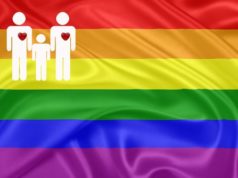
Supreme Court Decision Narrows Harassment Laws on Washington, DC—After a ruling in Vance v. Ball State University, employees filing claims of sexual or racial harassment against their employers will now face a more difficult road
Introduction
A recent decision by the United States Supreme Court in Vance v. Ball State University has sparked concerns among employees and advocates for workplace discrimination laws. The ruling has narrowed the definition of who qualifies as a “supervisor” under harassment laws, making it more challenging for employees to hold their employers accountable for sexual or racial harassment. This article will delve into the details of the case and the implications it may have on workplace harassment claims.
Background of Vance v. Ball State University
The case of Vance v. Ball State University centered around a woman named Maetta Vance, who filed a lawsuit against the university alleging racial harassment and a hostile work environment. The critical issue in the case was determining whether the alleged harasser, a co-worker named Davis, qualified as a supervisor or merely a fellow employee under Title VII of the Civil Rights Act of 1964.
Narrowing the Definition of Supervisor
In a 5-4 decision, the Supreme Court ruled that an employer can only be held vicariously liable for a hostile work environment created by a supervisor if the supervisor is empowered by the employer to take tangible employment actions against the victim. Tangible employment actions include hiring, firing, promoting, or making significant changes in employees’ terms or conditions of employment.
The Court’s ruling limited the definition of a supervisor to individuals who have the power to make these tangible employment actions—meaning that if the alleged harasser does not possess such authority, the employer cannot be held strictly liable for their actions. Instead, the employer may only be held accountable if they were negligent in addressing the harassment complaints.
Implications for Employees
The Vance v. Ball State University decision has important implications for employees who experience harassment in the workplace. Previously, a broader definition of supervisor allowed employees to hold their employers directly responsible for the actions of supervisors, making it easier to prove their case in court. However, after this ruling, employees will now have a more challenging road in establishing liability for employers when the alleged harasser is not in a true position of power.
Burden of Proof
As a result of this decision, employees alleging harassment will now face a higher burden of proof. To succeed in a harassment claim, employees must not only prove that they were subjected to a hostile work environment but also establish that their employer was negligent in addressing the complaints. This shift places a greater emphasis on an employer’s response to harassment allegations rather than the actions of the alleged harasser.
Importance of Clear Policies and Swift Action
In light of this Supreme Court decision, it becomes crucial for employers to have clear and comprehensive anti-harassment policies in place, as well as efficient reporting mechanisms for employees to raise their concerns. Employers must also promptly investigate any harassment claims and take appropriate action to prevent further harm. By doing so, employers can demonstrate their commitment to maintaining safe and inclusive workplaces while minimizing the potential liability following this narrowing of harassment laws.
Conclusion
The Vance v. Ball State University Supreme Court decision has undoubtedly altered the landscape of workplace harassment claims. By narrowing the definition of who qualifies as a supervisor, employees now face greater challenges in holding their employers accountable for harassment. As the legal framework evolves, it becomes vital for employees, employers, and advocates to remain vigilant in ensuring workplaces are free from harassment and discrimination and that appropriate action is taken swiftly when such allegations arise.
Washington, DC—After a ruling in Vance v. Ball State University, employees filing claims of sexual or racial harassment against their employers will now face a more difficult road.
The case hinged on the definition of the word “supervisor” according to the terms of Title VII of the Civil Rights Act, which prohibits workplace discrimination. According to Title VII, employees have extremely broad protections when harassment originates from a direct supervisor. Such harassment allows a plaintiff to obtain damages not just from the harasser, but also from the employer.
However, the law is significantly different when harassment comes not from supervisors, but from co-workers. In situations where co-workers are harassing a plaintiff without the employer’s knowledge, plaintiffs can only successfully sue their employer if they can show that their employer should have known about or deliberately ignored the harassing actions.
In a 5-4 decision, Justice Samuel Alito ruled that only people with direct hiring and firing authority over an employee could be considered a supervisor. Maetta Vance sued her employer, Ball State University, after she claimed she was racially harassed by someone she said was her supervisor.
Because Ball State University took corrective action against the harasser, the university claimed they should not be liable, and called the harasser a co-worker rather than a supervisor.
While Vance’s harasser, Shaundra Davis, was not allowed to directly hire or fire any employees, she was directly involved in directing Vance’s day to day activities. Vance’s attorneys argued that any person who could direct an employee’s work activity constituted a supervisor.
Advocates for workers believe that the new ruling may have a major impact on sexual harassment cases, especially in today’s workplaces, which often use a complicated supervisory structure. In her dissent, Ruth Bader Ginsburg said that “the court’s disregard for the realities of the workplace means that many victims of workplace harassment will have no effective remedy.”
For instance, in some situations, an employee’s supervisor according to the court’s new definition may be someone in a human resources department that the employee has little or no interaction with on a day to day basis. While all of the worker’s day to day activities may be regulated and directed by another employee, the court’s majority would consider that employee to be only a co-worker for the purposes of a harassment lawsuit.
The ruling was immediately hailed as a victory by pro-employer groups, and as a major setback by both civil rights organizations and labor unions.



































